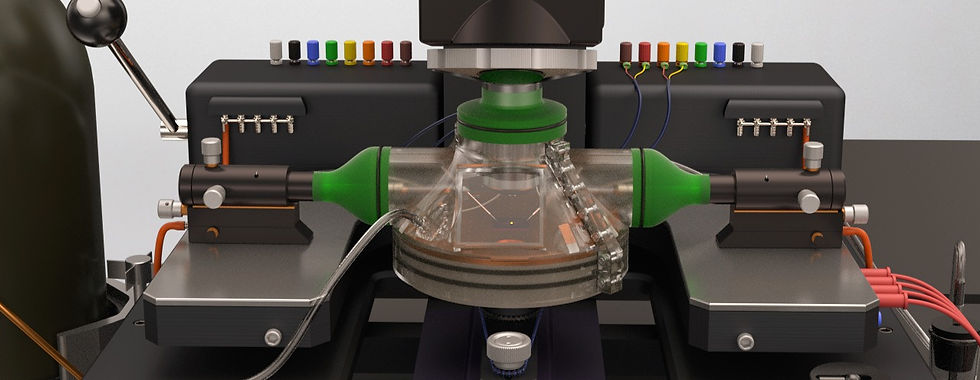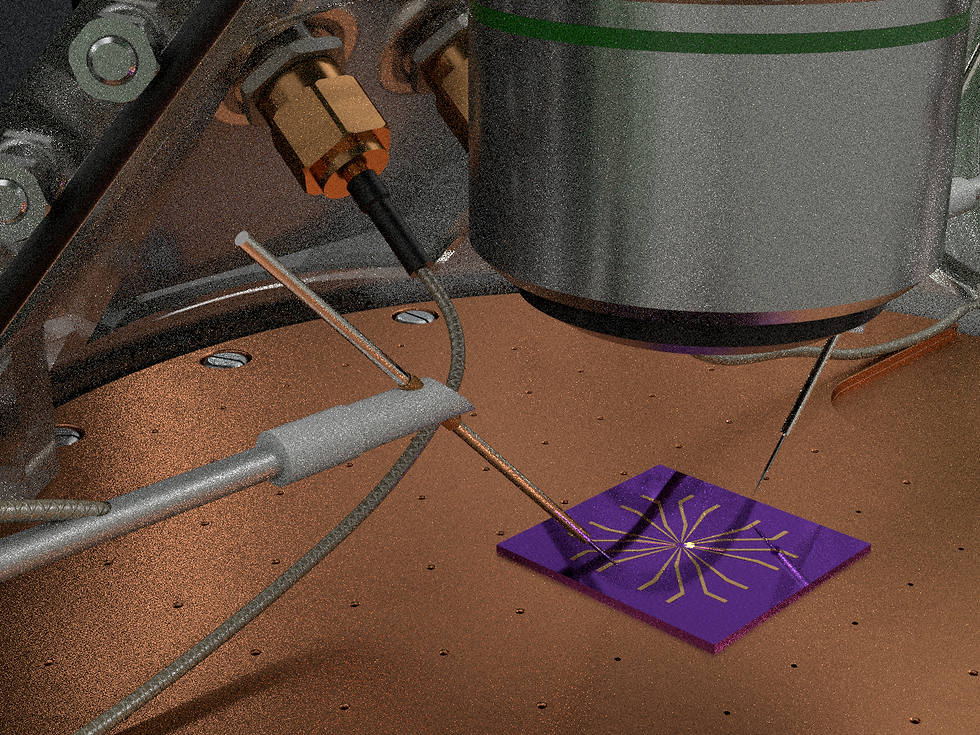How do we study air sensitive materials-I
- Boyu Zhang
- Jul 29, 2023
- 2 min read

In the field of material engineering, the study of air-sensitive samples holds great promise for various applications, such as energy storage, electronic devices, and renewable energy technologies. However, these materials, including perovskites and lithium-ion battery-related compounds, are highly reactive to air, particularly moisture and oxygen, leading to degradation and altered properties. To overcome these challenges and ensure accurate results, a controlled testing environment is essential. In response to this need, I have designed a custom seal chamber using 3D printing technology, which can be seamlessly integrated into a probe station. This innovative setup allows for the precise transfer of air-sensitive samples using a micromanipulator while enabling real-time electrical property testing.
The significance of my custom seal chamber lies in its cost-effective approach to addressing the challenges of handling and testing air-sensitive samples. Traditionally, researchers rely on expensive glove boxes to create an isolated environment for working with such materials. While glove boxes offer excellent protection, their high cost can be prohibitive for many research facilities, especially those with limited budgets. In contrast, my custom-designed seal chamber, manufactured using 3D printing, provides an affordable alternative that does not compromise on precision and functionality.

By leveraging 3D printing technology, the chamber's design ensures a gas-tight enclosure that effectively shields air-sensitive samples from ambient air, similar to a glove box. The incorporation of gas input and output ports allows for the introduction of protective gases, maintaining an inert atmosphere within the chamber, just like the controlled environment in a glove box. This protective setup preserves the integrity of the samples during handling and testing, yielding reliable and accurate results.
Additionally, the chamber's integration with a probe station and micromanipulator facilitates precise sample transfer and manipulation, enhancing researchers' ability to work with delicate air-sensitive materials effectively. The electrical feedthroughs further enable real-time electrical property measurements, providing valuable insights into the material's behavior.



Comments